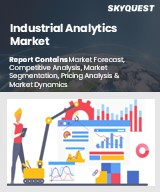
|
시장보고서
상품코드
1660583
산업 분석의 발전에 공간 인터페이스와 디지털 트윈이 필수적인 이유Why Spatial Interfaces and Digital Twins Are Essential to Advancing Industrial Analytics |
||||||
이번 IDC Perspective에서는 산업 분석을 위한 다양한 유형의 인터페이스에 대한 트렌드를 파악합니다. 디지털 트윈은 역사적으로 물리적 세계 시스템에 대한 데이터와 분석을 보여주는 공간 인터페이스와 시각화를 대표해 왔습니다. 데이터 및 분석 방법이 더욱 복잡해지고 상호 연결됨에 따라 조직은 이러한 모델의 채택과 운영 작업자의 사용 편의성을 고려해야 합니다. 특히 이러한 뷰의 자율 또는 보조 생성 기능이 진화하고 있다는 점을 고려할 때 더욱 그렇습니다. IDC의 글로벌 IT/OT 융합 전략 연구 책임자인 Jonathan Lang은 시간이 지나면 GenAI가 상당수의 기술을 쓸모없게 만들겠지만 단기적으로는 시스템을 연결하고 데이터 및 기술과 상호 작용하는 새로운 방식을 개발하여 매우 가치 있고 혁신적인 잠재력을 제공할 것으로 생각합니다. 예를 들어, IT 기술이 부족한 운영자는 자연어를 사용하여 IT 부서의 개입 없이도 AI 시스템이 디지털 트윈을 개발하도록 유도할 수 있습니다. 이를 통해 최전선에서 중요한 데이터 기반 의사 결정을 위한 대규모 혁신과 데이터 활용도를 크게 높일 수 있는 기반을 마련할 수 있습니다."라고 말했습니다.
주요 요약
상황 개요
기술 구매자에 대한 어드바이스
참고 자료
- 관련 조사
- 요약
This IDC Perspective identifies trends in different types of interfaces for industrial analytics. Digital twins have historically represented spatial interfaces and visualizations that showcase data and analyses for physical world systems. As the data and analytics methods become more complex and interconnected, it is essential that organizations consider the adoption of these models and usability by operations workers. This is particularly true given the evolving capabilities of autonomous or assisted generation of such views."I think GenAI over time is going to make quite a lot of technology obsolete, but in the near term it offers the potential to bridge systems and develop new ways of interacting with data and technology that are highly valuable and transformative," says Jonathan Lang, research director, Worldwide IT/OT Convergence Strategies at IDC. "For example, an operator with limited IT skills could use natural language to prompt an AI system to develop a digital twin without any IT intervention. This paves the way for massive innovation and significant increases in data utilization toward data-driven decisions where they matter - at the front line."
Executive Snapshot
Situation Overview
Advice for the Technology Buyer
Learn More
- Related Research
- Synopsis










